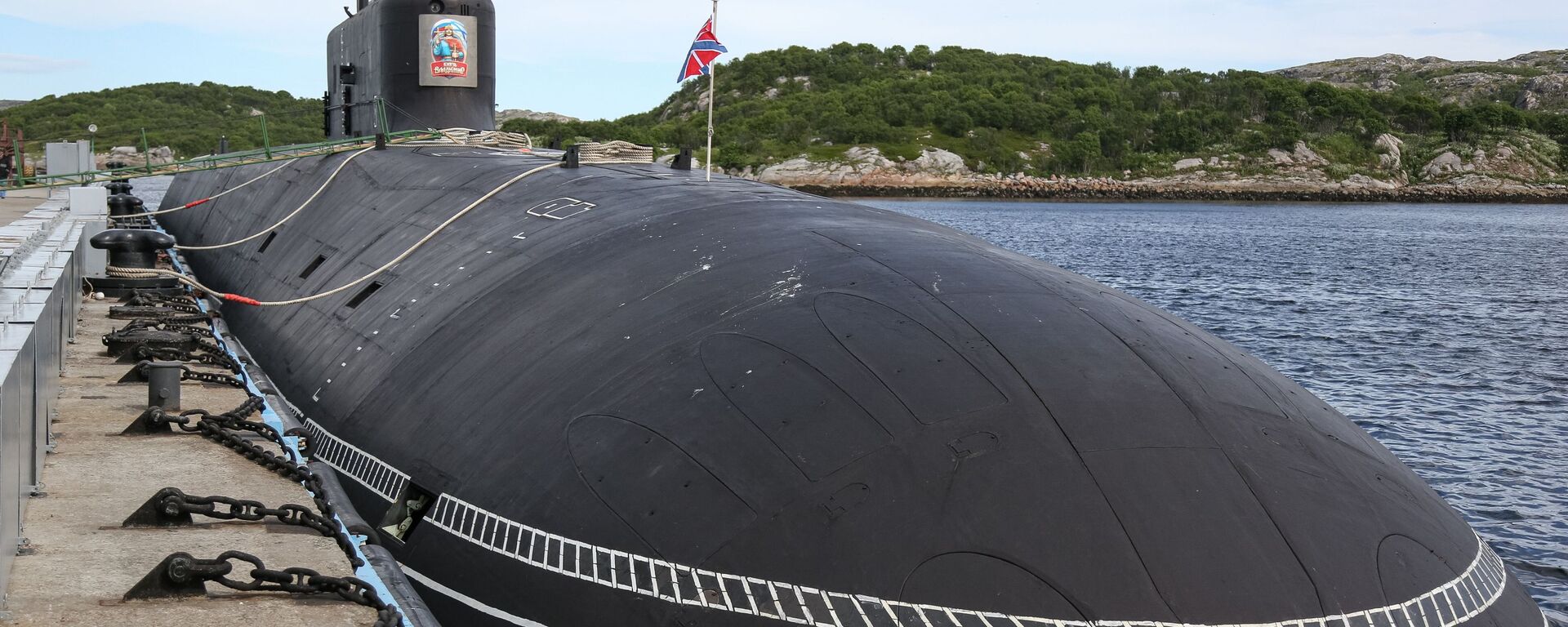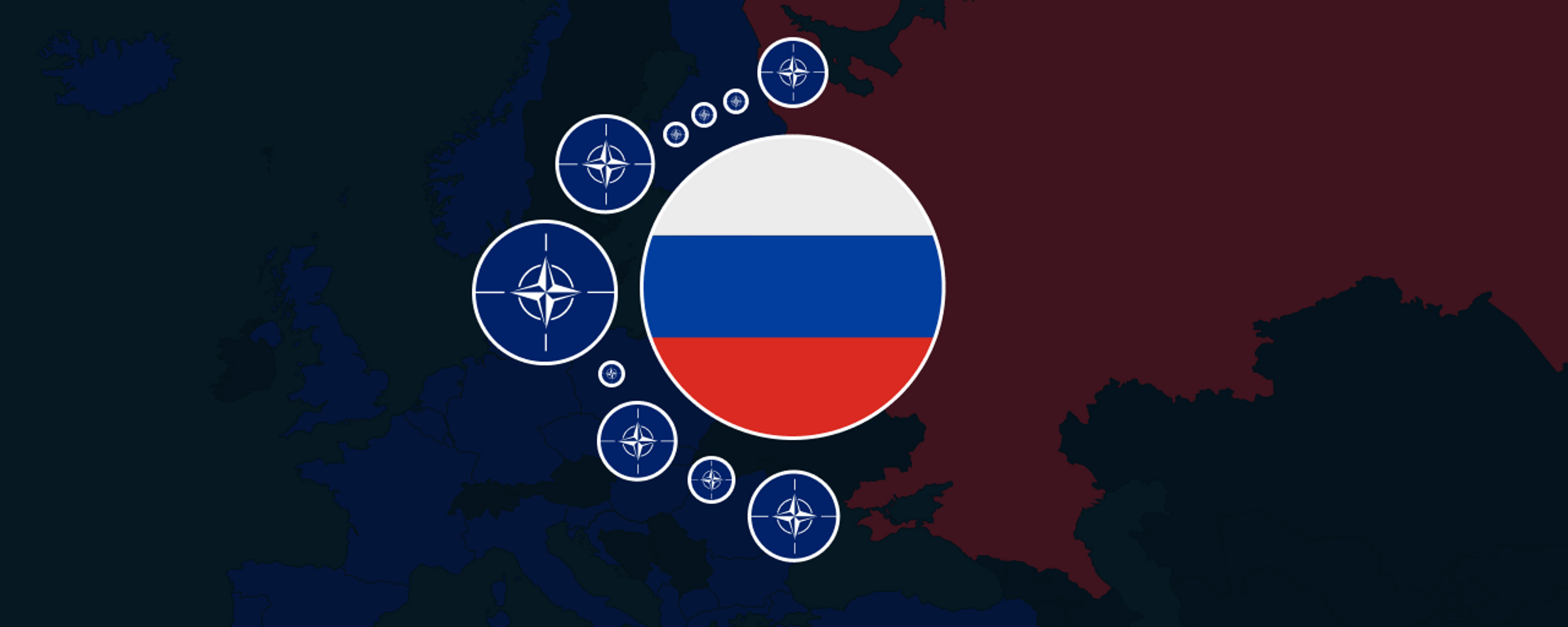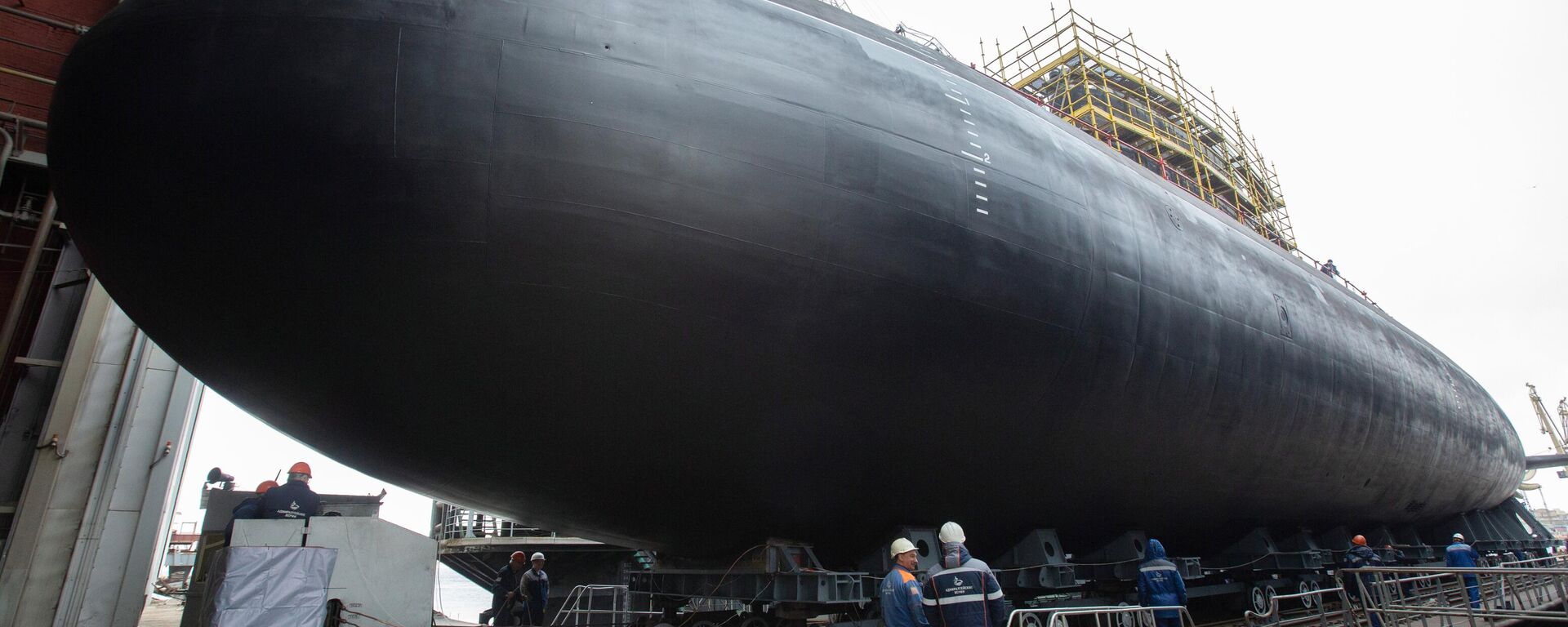https://sputnikglobe.com/20230514/nato-in-a-bind-as-atrophied-asw-fleet-faces-russias-force-multiplier-subs-1110350518.html
NATO in a Bind as ‘Atrophied’ ASW Fleet Faces Russia’s ‘Force Multiplier’ Subs
NATO in a Bind as ‘Atrophied’ ASW Fleet Faces Russia’s ‘Force Multiplier’ Subs
Sputnik International
Nuclear-powered ballistic missile submarines and whisper quiet diesel-electric-powered attack boats make up the backbone of Russia’s modern naval deterrent, providing Moscow with opportunities to challenge potential adversaries’ overall advantages in size and tonnage.
2023-05-14T14:36+0000
2023-05-14T14:36+0000
2023-05-14T15:00+0000
military
russia
moscow
arctic
nato
international institute for strategic studies
russian northern fleet
submarine
https://cdn1.img.sputnikglobe.com/img/107862/50/1078625082_0:150:3109:1898_1920x0_80_0_0_cadb6fcfa8bddd17943379d8b3673d44.jpg
The North Atlantic Treaty Organization’s anti-submarine warfare (ASW) capabilities are lagging behind those of Russia’s newest sub classes, with NATO’s expansion toward Russia’s borders in the Nordics posing new threats and opportunities to both Russia and the Western bloc, defense analysts have indicated.Speaking to US media, International Institute for Strategic Studies senior fellow Nick Childs said that Russia has invested heavily in submarines in recent years, including “special-mission submarines,” while NATO’s ASW capabilities have “atrophied following the end of the Cold War and as attention had strayed elsewhere.”It is only now “dawning on NATO governments that they need to invest more in countering such threats,” according to the observer.According to the professor, Finland’s accession to NATO offers the West important new prospects to try to hem in Russia’s sub fleets. Grove called the Kola Peninsula – the northern Russian territory about 110 km from Norway, and 180 km from the Finnish border, “the most important military area for the old Soviet Union,” and for “the Russian Federation today,” owing to its use as the home base of the Russian Northern Fleet.It is here that part of Russia’s fleet of Borei and Borei-A class nuclear ballistic missile submarines is based – providing Moscow with a guaranteed deterrent against a NATO nuclear or conventional decapitation strike attack. Part of Russia’s stock of nuclear-powered Yasen-class cruise missile subs are also stationed in the north.But the same holds true in reverse, with NATO’s advance toward Russia’s borders in the Arctic giving the Russian military new targets using shorter-range systems – should the alliance decide to station missiles or long-range artillery near the frontiers in a threatening posture.UK Conservative Party lawmaker Bob Seely believes Moscow has come to “an understanding” of its inability to “compete on terms of scale with the West,” and so has “developed an idea of integrated warfare” – an asymmetric approach which includes plans to target Western oil and pipeline infrastructure and telecommunications cables in the event of a conflict.NATO moved to create a "Critical Undersea Infrastructure Cell" to meet this challenge in February, and committed to “significantly increase” the number of warship and aircraft patrols.Grove said Russia adjusted for its inability to crank out large numbers of new subs in the 1990s and 2000s by concentrating on new designs. Once the opportunity to build new vessels arose in the 2010s, the subs the Navy did get came to enjoy a so-called force “multiplier effect,” or a “strategic effect out of all proportion to that small number,” according to the observer.Grove did not elaborate, but some examples of how Russia can use its subs as a force multiplier may include the use of a single sub to counter entire fleets, or to use the advantages of stealthy underwater maneuvers to sail to areas which would become off-limits for Russian surface warships in a crisis.Russia has repeatedly tested out the stealth characteristics of its subs in real-world conditions – not only the ballistic and cruise missile boats prowling the Arctic, Atlantic, and Pacific Oceans, but also cheaper and more readily available attack boats designed to shadow enemy fleets. In recent years, Project 636 and 636.3 Varshavyanka-class submarines, informally dubbed "Black Holes" by some Western defense observers, managed to repeatedly evade entire NATO armadas and sneak past ASW warships and aircraft searching for them in the Mediterranean.
https://sputnikglobe.com/20210517/russia-could-go-beyond-planned-series-of-10-borei-class-nuclear-powered-subs-government-says-1082913306.html
https://sputnikglobe.com/20230404/russias-border-with-nato-countries-grows-after-finland-joins-alliance-1109118718.html
https://sputnikglobe.com/20230428/project-6363-varshavyanka-inside-russias-stealthiest-non-boomer-sub-1109917484.html
russia
moscow
arctic
Sputnik International
feedback@sputniknews.com
+74956456601
MIA „Rossiya Segodnya“
2023
News
en_EN
Sputnik International
feedback@sputniknews.com
+74956456601
MIA „Rossiya Segodnya“
Sputnik International
feedback@sputniknews.com
+74956456601
MIA „Rossiya Segodnya“
submarine, sub, nato, russia, anti-submarine warfare, asw, force multiplier, high seas
submarine, sub, nato, russia, anti-submarine warfare, asw, force multiplier, high seas
NATO in a Bind as ‘Atrophied’ ASW Fleet Faces Russia’s ‘Force Multiplier’ Subs
14:36 GMT 14.05.2023 (Updated: 15:00 GMT 14.05.2023) Nuclear-powered ballistic missile submarines and whisper quiet diesel-electric-powered attack boats make up the backbone of Russia’s modern naval deterrent, providing Moscow with opportunities to challenge potential adversaries’ overall advantages in size and tonnage.
The North Atlantic Treaty Organization’s anti-submarine warfare (ASW) capabilities are lagging behind those of Russia’s newest sub classes, with NATO’s expansion toward Russia’s borders in the Nordics posing new threats and opportunities to both Russia and the Western bloc, defense analysts have indicated.
Speaking to US media, International Institute for Strategic Studies senior fellow Nick Childs
said that Russia has invested heavily in submarines in recent years, including “special-mission submarines,” while NATO’s ASW capabilities have “atrophied following the end of the Cold War and as attention had strayed elsewhere.”
It is only now “dawning on NATO governments that they need to invest more in countering such threats,” according to the observer.
“This is something definitely that we’ve been slow to appreciate,” said Britannia Royal Naval College Dartmouth lecturer Mark Grove, adding that the US and its allies are now “playing catch up.”
According to the professor, Finland’s accession to NATO offers the West important new prospects to try to hem in Russia’s sub fleets. Grove called the Kola Peninsula – the northern Russian territory about 110 km from Norway, and 180 km from the Finnish border, “the most important military area for the old Soviet Union,” and for “the Russian Federation today,” owing to its use as the home base of the Russian Northern Fleet.
It is here that part of Russia’s fleet of Borei and Borei-A class nuclear ballistic missile submarines is based – providing Moscow with a guaranteed deterrent against a NATO nuclear or conventional decapitation strike attack. Part of Russia’s stock of nuclear-powered Yasen-class cruise missile subs are also stationed in the north.
“The enlargement of NATO, in the minds of the Russians, undoubtedly raises concerns about the viability and the security of those facilities, and indeed, of the Northern Fleet itself,” Grove said. Something similar happened two decades ago, when Poland and the Baltic countries joined NATO, challenging the Russian Baltic Fleet and threatening to turn the Baltic Sea into a “NATO lake,” according to the observer.
But the same holds true in reverse, with NATO’s advance toward Russia’s borders in the Arctic giving the Russian military new targets using shorter-range systems – should the alliance decide to station missiles or long-range artillery near the frontiers in a threatening posture.
UK Conservative Party lawmaker Bob Seely believes Moscow has come to “an understanding” of its inability to “compete on terms of scale with the West,” and so has “developed an idea of integrated warfare” – an asymmetric approach which includes plans to target Western oil and pipeline infrastructure and telecommunications cables in the event of a conflict.
NATO moved to create a "Critical Undersea Infrastructure Cell" to meet this challenge in February, and committed to “significantly increase” the number of warship and aircraft patrols.
But, according to Childs, the jury is still out on the outcome of a possible match-up of Russian subs and NATO assets on the high seas. The alliance’s navies are undoubtedly “collectively significantly stronger than Russia’s,” but anti-submarine warfare remains a “challenging business,” he said.
Grove said Russia adjusted for its inability to crank out large numbers of new subs in the 1990s and 2000s by concentrating on new designs. Once the opportunity to build new vessels arose in the 2010s, the subs the Navy did get came to enjoy a so-called force “multiplier effect,” or a “strategic effect out of all proportion to that small number,” according to the observer.
Grove did not elaborate, but some examples of how Russia can use its subs as a force multiplier may include the use of a single sub to counter entire fleets, or to use the advantages of stealthy underwater maneuvers to sail to areas which would become off-limits for Russian surface warships in a crisis.
Center for Naval Analyses researcher Dmitry Gorenburg said there is “definitely space for improvements” in NATO’s ASW capabilities, and deems “the Russian submarine threat [as] the greatest threat that Russia poses” to the alliance.
Russia has repeatedly tested out the stealth characteristics of its subs in real-world conditions – not only the ballistic and cruise missile boats prowling the Arctic, Atlantic, and Pacific Oceans, but also cheaper and more readily available attack boats designed to shadow enemy fleets. In recent years, Project 636 and 636.3 Varshavyanka-class submarines, informally dubbed "Black Holes" by some Western defense observers, managed to repeatedly evade entire NATO armadas and sneak past ASW warships and aircraft searching for them in the Mediterranean.





